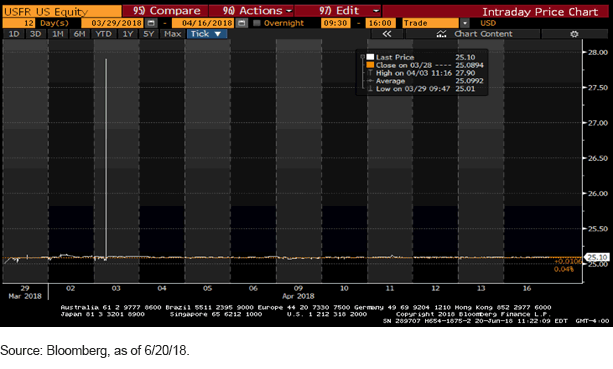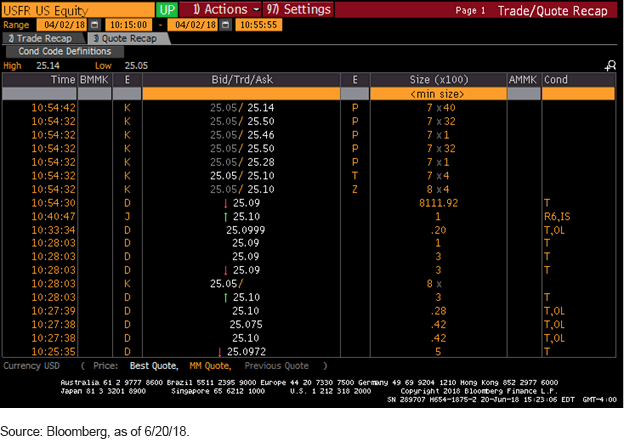The Do’s And Don’ts Of Trading ETFs
Exchange-traded funds (ETFs) have seen immense growth over the past decade. There are a multitude of benefits, including transparency, tax efficiency and the ability to make intraday trades, that have contributed to the use and growth of ETFs. While these are all beneficial to investors, we continue to see questions around ETF trading. Although ETFs do trade on-exchange like stocks, investors have to understand that ETFs trade differently and that ETF execution is an imperative part of investing that should not be minimized.
Many investors know that when evaluating an ETF, average daily volume (ADV) does not indicate the true liquidity of an ETF. The liquidity of an ETF resides in its underlying securities, but how does one access that to ensure smooth execution?
Let’s discuss the do’s and the don’ts of how to best trade an ETF.
The Don’ts
1. Don’t trade in the first or last 15 minutes of the trading day. This is when trade desks have less transparency and markets are more volatile.
2. Don’t place market orders; if you want to trade electronically, place limit orders. We advise investors to always use limit orders, especially in times of volatility. We also advise investors to not use stop-loss orders that turn into market orders.
The second point is especially important to focus on because many investors can make costly mistakes by simply “throwing in a market order.” Let’s take a look at an example that illustrates this point.
Figure 1

Figure 1 shows an investor who wanted to purchase The WisdomTree Bloomberg Floating Rate Treasury Fund (USFR). Instead of utilizing his or her resources and working with a trading desk, he or she carelessly entered in a market order that spiked the graph up nearly 11%. That is an extremely costly mistake that he or she will have to share with clients. The underlying securities are U.S. Treasury floating rate notes, which are extremely liquid, with an outstanding issuance of $342 billion as of May 31, 2018.1
The Do’s
1. Do utilize your resources. Consult your trading desk as well as the relevant capital markets desk. The majority of issuers have capital markets teams that can consult on a trade. Additionally, the majority of advisors have access to a trading desk. These desks have access to expert market makers who can access the underlying liquidity, just like the example in figure 2.
2. Do use a limit order when trading electronically, this cannot be said enough!
Figure 2

The client in figure 2 was able to trade 811,192 shares or just over $20 million notional at a penny inside the offer. That is 30 times the ADV at the time of the trade! The investor worked with his or her trading desk because they knew that there was plenty of liquidity available via the underlying securities. Making a simple phone call or sending a simple email can make the world of a difference. Would you rather be the investor who spiked the graph up 11% or would you rather be the investor with flawless execution?
The WisdomTree Capital Markets desk is always a resource in terms of ETF trading and education. Any question is valid and no order size is too small to reach out to us for a consultation. Most investors have a trading desk through their firm or custodian, and they are always a resource as well. If there is one thing to take away from this piece, it’s do use your resources and make that phone call or email—it can be the difference between seamless execution and a very costly mistake.
1Source: U.S. Treasury Monthly Statement, as of 5/31/2018.
Disclaimer: Investors should carefully consider the investment objectives, risks, charges and expenses of the Funds before investing. U.S. investors only: To obtain a prospectus containing this ...
more


